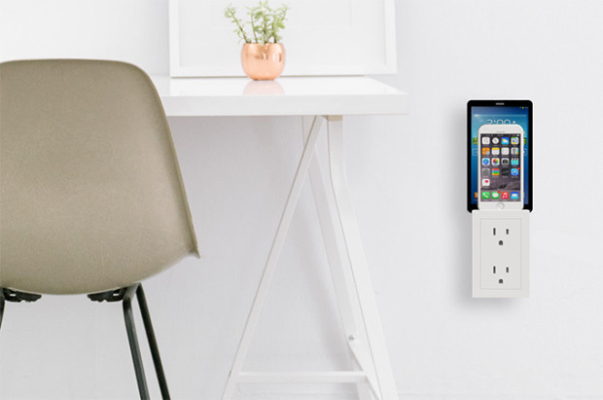The Premise. The electric light revolutionized everything. Since then there have been several upgrades from a hardware perspective in terms of bulbs or light output, but not much in the way of operation. While several companies are allowing people to control their lights with their mobile devices, one company wants to put the mobile device in charge and make the whole process automatic.
The Product. The brightup smart lighting system avoids the smart home lighting automation equipment that has been promised for decades but has rarely seen adoption. Instead of installing a complicated network for the home’s outlets, brightup has a set of outlet caps that can be plugged in the home. Then, lamps or other lighting systems can be plugged in, and interface with the home’s central unit. The central unit detects the smartphone on which the brightup app is installed, and turns on the lights to greet users. Settings for dimmer switches that detect TVs or travel mode which gives off the illusion of someone in an empty home are also available.
The Pitch. The designers of brightup use their video to make a lot of vague statements about technology, but once the concept of brightup’s functions start, it’s easy to see the appeal. The campaign’s pictures show off the technology and the internal components, as well as feature several seemingly unrelated blocks of computer programming. To meet its goals of keeping prices low and complete the plastic tooling, brightup needs 130,000, or just over $175,000.
The Perks. The brightup starter kit costs €159 (under $220) with approximately an additional $20 shipping cost outside of the European Union. The starter kit comes with 1 central unit and 1 device (a plug or in-wall dimmer). 2 additional units come in the featured bundle for an additional €40, or the entire house can be connected at the €449 (~$615) level with 1 central unit and 10 devices. Higher tiers are meant to be shared among multiple people and come with up to five central units.
The Potential. Having a home’s light completely set up on the brightup system seems like a great idea, but the price point is a little steep to start with. The system does little to conserve power like competitors unless residents forget to turn lights off when they leave, and the security mode would only work in rooms where brightup plugs were installed. It’s a neat idea, and certainly an innovation where one is sorely needed, but it’s questionable whether or not brightup’s unique features are worth the additional cost. Currently, the technology is not compatible with U.S. electrical systems.
